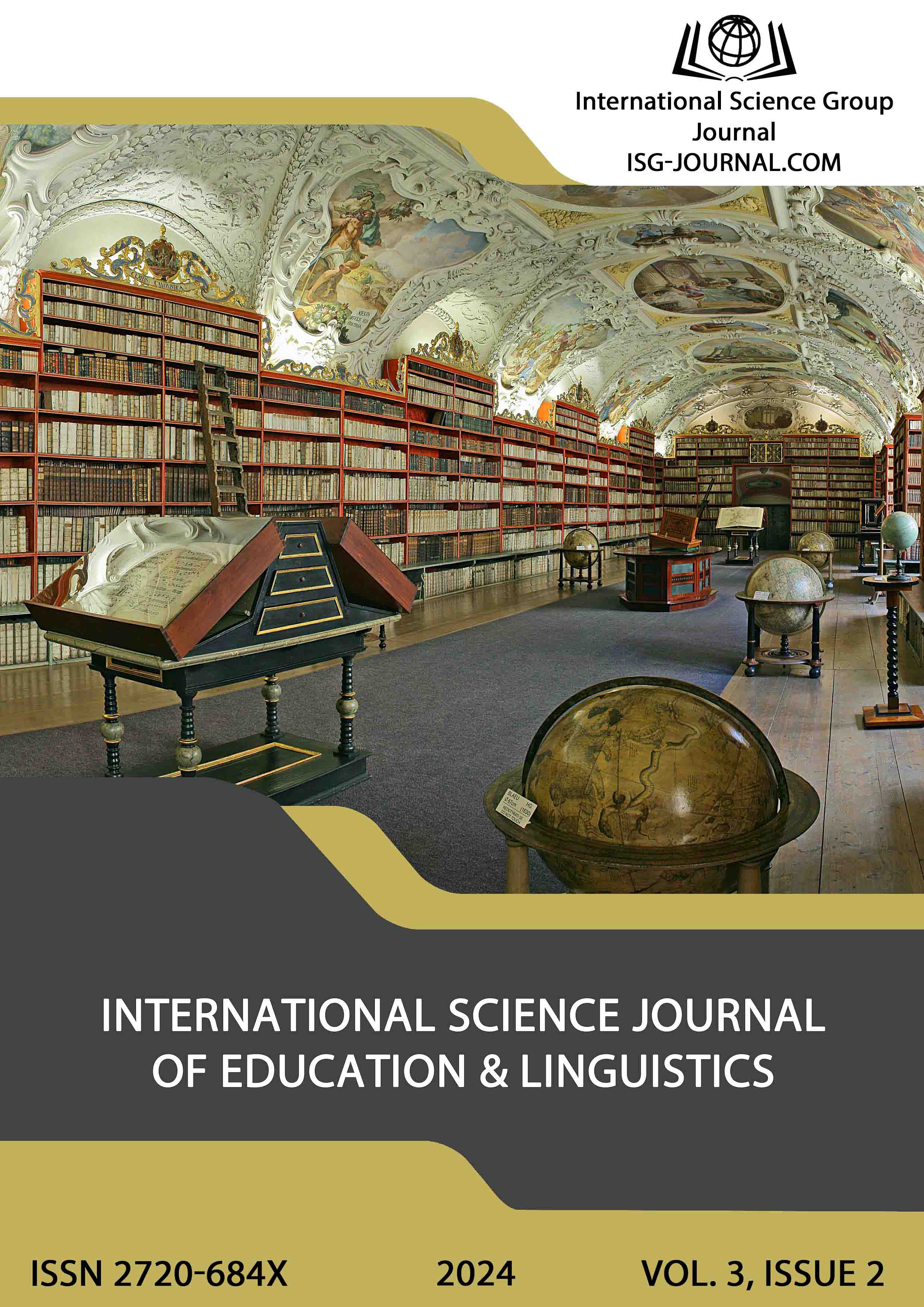Selection of AI-based services for creating visual learning content
DOI:
https://doi.org/10.46299/j.isjel.20240302.13Keywords:
artificial intelligence, AI, artificial intelligence technology, visualization, learning content, visual learning content, service, platformAbstract
the article discusses artificial intelligence-based services for creating visual content that can be used by teachers in the educational process, i.e., for creating visualization tools. The growing interest and need for the use of digital technologies in education creates a need to find and select effective tools that will allow teachers to optimize the learning process. Given the rapid development of artificial intelligence technology, scientists are increasingly exploring the possibilities of its use in educational activities. We believe that artificial intelligence has the potential to revolutionize education by providing students with access to more interesting, engaging, and effective learning materials. One of the ways artificial intelligence can be used in education is to create visualization tools for learning material. Visual learning content, such as images, presentations, and videos, can be more effective for learning than traditional teaching materials. It can help learners better understand complex scientific concepts, make them more interested in learning, and increase their motivation. There are many AI-based services that can be used to create visual learning content. These services offer different features and capabilities, so it's important to choose the one that best suits your needs. Among the services for creating visual content, the author considers services for creating images (DALL-E 2, DreamStudio, Leonardo.Ai, Adobe Firefly), presentations (Wepik, Gamma, Sendsteps), and videos (Runway, Fliki, Video AI). The article also notes that the advantages of using AI-based services to generate visual learning content include reducing the time spent on teacher preparation for a lesson, as well as creating visual aids that are difficult or impossible to find on the Internet. The following disadvantages are also highlighted: the lack of interface adaptation, the ability to specify a textual description or actually generate content in Ukrainian, and the inconsistency of the content with reality.References
Бондаренко, Т.В. (2018). Особливості використання програмного засобу Prezi у процесі розробки навчальних презентацій. Інформаційні технології і засоби навчання, 63(1), 1–11. https://doi.org/10.33407/itlt.v63i1.1907.
Годунова, А.В. (2023). Використання сервісів зі штучним інтелектом для оптимізації дослідницької та наукової діяльності. У Управління якістю освіти в умовах воєнного стану та повоєнного відновлення України (с. 66–74).
Ковтанюк, М.С. (2022). Створення мапи думок за допомогою вебресурсу Canva. У Комп’ютерні технології: інновації, проблеми, рішення (с. 292–293). https://dspace.udpu.edu.ua/handle/123456789/15370.
Ковтанюк, М.С., & Криворучко, І.І. (2021). Візуалізація навчального контенту при викладанні інформатичних дисциплін. У Наука. Освіта. Молодь (с. 182–185). https://dspace.udpu.edu.ua/handle/123456789/13664.
Коломієць, А. М., & Кушнір, О. І. (2023). Використання штучного інтелекту в освітній та науковій діяльності: Можливості та виклики. Сучасні інформаційні технології та інноваційні методики навчання в підготовці фахівців: Методологія, теорія, досвід, проблеми, (70), 45–57. https://doi.org/10.31652/2412-1142-2023-70-45-57.
Криворучко, І.І. (2022). Інфографіка як засіб унаочнення навчального матеріалу при викладанні інформатичних дисциплін. У Актуальні проблеми підготовки сучасного педагога: теорія, історія, практика (с. 262–265). https://dspace.udpu.edu.ua/handle/123456789/15366.
Криворучко, І.І. (2022). Корисні вебресурси для оформлення навчального контенту. У Наука. Освіта. Молодь (с. 228–230). https://dspace.udpu.edu.ua/handle/123456789/14745.
Медведєва, М.О. (2021). Візуалізація навчального матеріалу засобами онлайн-сервісів. У Сучасні інформаційні технології в освіті і науці (с. 11–15).
Медведєва, М.О., Колмакова, В.О., & Коровнік, І.С. (2021). Візуалізація навчального матеріалу: аналіз сучасних онлайн-сервісів. Інноваційна педагогіка, 2 (41), 128–132. https://doi.org/10.32843/2663-6085/2021/41/2.25.
Ткачук, Г.В. (2019). Ментальні карти як засіб засвоєння технічних знань у процесі практично-технічної підготовки майбутніх учителів інформатики. Проблеми підготовки сучасного вчителя, (17), 105–112. https://doi.org/10.31499/2307-4914.17.2018.162502.
Ткачук, Г.В. (2017). Особливості виготовлення відеоматеріалів з технічних дисциплін у процесі підготовки майбутніх учителів інформатики. Наукові записки. Серія: Проблеми методики фізико-математичної і технологічної освіти, (11 (IV)), 189–192.
Толочко, С. (2023). Методика використання сервісів зі штучним інтелектом для репрезентації результатів наукових досліджень. У Ricerche Scientifiche E Metodi Della Loro Realizzazione: Esperienza Mondiale E Realtà Domestiche (с. 198–201). European Scientific Platform. https://doi.org/10.36074/logos-29.09.2023.57.
Черняховська, А.О. (2023). Використання інструментів штучного інтелекту для створення і покращення навчальних матеріалів та візуального контенту. У Інноваційні практики наукової освіти (с. 808–813).
Ямковенко, В.О., & Тітова, Л.О. (2023). Сервіси для роботи з графічними зображеннями на базі штучного інтелекту. У Наука. Освіта. Молодь (с. 393–395). https://dspace.udpu.edu.ua/handle/123456789/15463.
Ясінський, А., Яницька, О., & Іванюта, О. (2024). Технології штучного інтелекту в системі підготовки фахівців у закладах вищої освіти. Вісник науки та освіти, (12(18)). https://doi.org/10.52058/2786-6165-2023-12(18)-890-905.
Downloads
Published
How to Cite
Issue
Section
License
Copyright (c) 2024 Liubov Titova

This work is licensed under a Creative Commons Attribution 4.0 International License.





